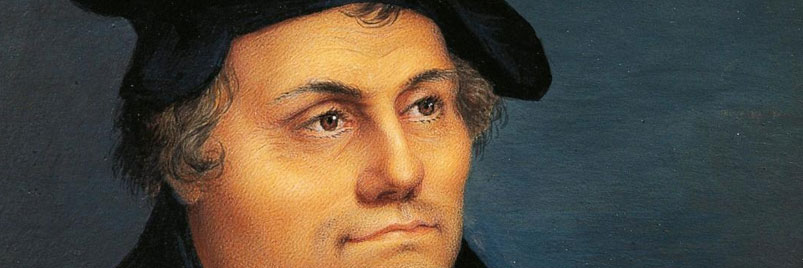Martin Luther’s nailing of his ninety-five theses to the church door on October 31, 1517, provoked a debate that culminated, finally, in what we now call the Protestant Reformation – which would give rise to Protestantism as the third major force within Christendom, alongside Roman Catholicism and Eastern Orthodoxy.
An heir of Bishop Augustine of Hippo, Martin Luther is one of the most significant figures in Christian history.
Notably, this 16th century law student, turned Augustinian monk, became the center of a great controversy after his theses were copied and distributed throughout Europe. Initially protesting the pope’s attempt to sell salvation, Luther’s study of Scripture soon led him to oppose the church of Rome on issues including the primacy of the Bible, over church tradition, and the means by which we are found righteous in the sight of God.
This last issue is probably Luther’s most significant contribution to Christian theology. Though preached clearly in the New Testament and found in the writings of many of the church fathers, the medieval bishops and priests had largely forgotten the truth that our own good works can by no means merit God’s favor. Salvation is by grace alone through faith alone, and good works result from our faith, they are not added to it as the grounds for our right standing in the Lord’s eyes (Eph. 2:8-10). Justification, God’s declaration that we are not guilty, forgiven of sin, and righteous in His sight comes because through our faith alone the Father imputes, or reckons to our account, the perfect righteousness of Christ (2 Cor. 5:21).
Martin Luther’s rediscovery of this truth led to a whole host of other church and societal reforms and much of what we take for granted in the West would have likely been impossible had he never graced the scene.
- Luther’s translation of the Bible into German put the Word of God in the hands of the people, and today Scripture is available in the vernacular language of many countries, enabling lay people to study it with profit.
- He reformed the Latin mass by putting the liturgy in the common tongue so that non-scholars could hear and understand the preached word of God and worship the Lord with clarity.
- Luther lifted the unbiblical ban on marriage for the clergy and by his own teaching and example radically transformed the institution itself.
- He recaptured the biblical view of the priesthood of all believers, showing all people that their work had purpose and dignity because in it they can serve their Creator.
Today, Luther’s legacy lives on in the creeds and confessions of Protestant bodies worldwide. Many celebrate the importance of The Reformation with their own Reformation Day Celebrations.
The Luther Seal or Luther Rose is a widely recognized symbol for Lutheranism. It was the seal that was designed for Martin Luther at the behest of John Frederick of Saxony in 1530. Luther saw it as a compendium or expression of his theology and faith, which he used to authorize his correspondence. You can find the Luther Rose in many of our products.
Let the bravery that was the undergirding for his famous words, live on in us.

